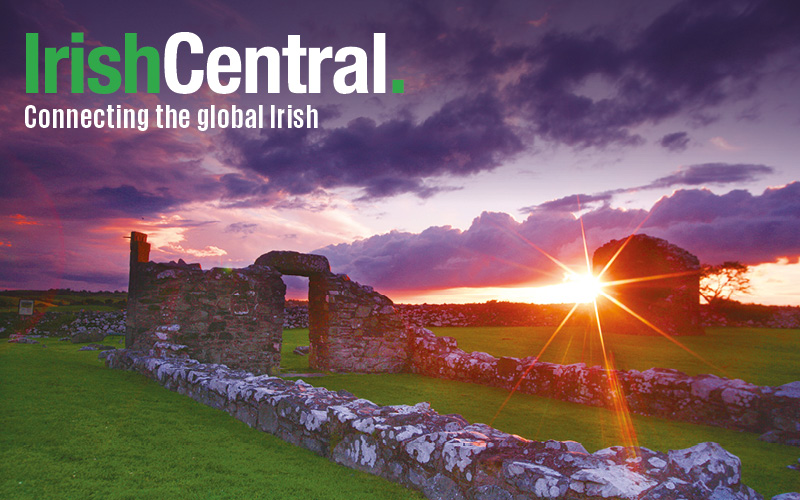In one of the biggest officially-organised events ever seen in Ireland, hundreds of thousands of people all over the country gathered yesterday to mark the centenary of the Easter Rising against British rule.
The centerpoint of the celebrations was the General Post Office in downtown Dublin which was taken over on Easter Monday 1916 by the Irish revolutionary forces under the leadership of Patrick Pearse and James Connolly.
Captain Peter Kelleher, 27th Infantry Battallion, reads out the Proclamation #ireland2016 pic.twitter.com/qKIOga2lrb
— MerrionStreet.ie (@merrionstreet) March 27, 2016
As part of today's commemoration, Captain Peter Kelleher of the Irish Army read out the Proclamation of the Irish Republic with its stirring declaration:
"We hereby proclaim the Irish Republic as a Sovereign Independent State, and we pledge our lives and the lives of our comrades in arms to the cause of its freedom, of its welfare, and of its exaltation among the nations."
Since no government has yet been formed after the recent Irish general election on February 26, Enda Kenny holds the position of Acting Taoiseach, and in that capacity he told the crowd that the State was honoring the memory of those who died in the Easter Rising with the respect and dignity due to them.
The Irish Tricolour of green, white and orange was lowered to half-mast at the GPO and President Michael D Higgins laid a wreath in memory of all those who died.
A minute's silence was observed, the flag was raised again and, while the national anthem was played, the Irish Air Corps conducted a fly-past.
Former Irish presidents Mary Robinson and Mary McAleese were among the dignitaries in attendance, along with Northern Ireland Deputy First Minister Martin McGuinness. Others present included former taoisigh (prime ministers) Bertie Ahern and Brian Cowen, Lord Mayor of Dublin Críona Ní Dhálaigh and British Ambassador to Ireland, Dominick Chilcott.
As part of the commemoration, almost 4,000 members of the Irish security forces including army, police and emergency services marched from St .Stephen's Green, past the GPO to Capel Street on the north side of the River Liffey.
Children representing the four Irish provinces – Connacht, Leinster, Munster and Ulster – placed daffodils at the GPO. Head chaplain of the Defence Forces, Father Seamus Madigan, said the children's gesture was a "symbol of the unshakeable resolve to live together on this island in peace and harmony."
The city's Luas tram service was not in operation due to a strike and extras buses were laid-on to cope with the demand for public transport.
An earlier wreath-laying service took place at the Stonebreakers' Yard, a stark location in the city's Kilmainham Gaol, where 14 leaders of the Rising were executed by British Army firing squads, a move that alienated Irish public opinion at the time and increased support for the revolutionaries.
The wreath was laid by President Higgins, with members of the caretaker government in attendance as well as Fianna Fáil leader Micheál Martin and Sinn Féin's Martin McGuinness from the North's power-sharing Executive.
In a separate ceremony at historic Glasnevin Cemetery, Minister for Arts, Heritage and the Gaeltacht Heather Humphreys and British Ambassador Dominick Chilcott laid wreaths at the Sigerson Memorial, a monument to the rebel dead of Easter Week 1916.
Wreath laying ceremony about to begin here in Glasnevin #tv3news #1916 #EasterRising pic.twitter.com/HhPVsU1874
— Laura Hogan (@LauraHoganTV3) March 27, 2016
Wreaths were also laid at the graves of Edward Hollywood, a weaver who made the first Irish Tricolour, and Peadar Kearney, who wrote the lyrics of "The Soldiers' Song," which was later translated into Irish as "Amhrán na bhFiann," the Irish national anthem.
In an earlier event at noon on Saturday at the Garden of Remembrance in Dublin, Muriel McAuley, a grand-daughter of Thomas McDonagh, one of the executed leaders of the rebellion, read out the defiant words of Patrick Pearse after the rebellion:
"We seem to have lost; but we have not lost. To refuse to fight would have been to lose; to fight is to win. We have kept faith with the past, and handed on its tradition to the future."
Meanwhile, at a ceremony in Belfast's Milltown Cemetery, Sinn Féin leader Gerry Adams said: “A united Ireland means the unity of the people of this island, including those who see themselves as British."
He called for "genuine efforts to outreach to the unionists on the basis of equality."




Comments